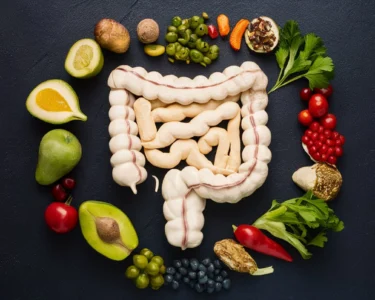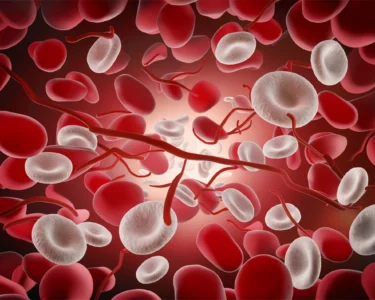Intermittent fasting is gaining popularity as an effective weight loss strategy. However, it’s important to talk to your doctor before starting a fasting diet.
The 16/8 intermittent fasting plan allows you to eat in a set window of 8 hours each day, including zero-calorie beverages like water or black coffee. It also includes a variety of healthy foods such as vegetables, whole grains and lean proteins.
Introduction to Intermittent Fasting Schedule For Fat Loss
Intermittent fasting for fat loss is a weight loss trend that is getting more attention. Proponents claim it is an effective and research-backed way to lose weight. However, if it is not done sensibly, intermittent fasting can cause health issues such as bloating and dehydration.
The most common intermittent fasting diets are alternate-day fasting (0-500 calorie per ‘fast day’ alternating with ad libitum intake on ‘feast days’), 5:2 diet (two feast days and five fast days), and daily time-restricted eating. These diets have been shown to produce clinically significant weight loss.
Moderate proponents of intermittent fasting suggest that you eat sensibly most of the time and indulge only on occasion (like on a designated “cheat day”) to get the most benefits from this type of eating pattern. They say that your body adapts to intermittent fasting by increasing fat burning and decreasing sugar levels. In addition, when you don’t eat for long periods of time, your nervous system sends signals that help break down body fat into free fatty acids to use as energy.
Different Intermittent Fasting Protocols
Intermittent fasting involves alternating periods of time when you consume no food or limited calories with times when you eat a normal healthy diet. The goal is to lose weight and improve health outcomes including body composition, heart disease risk factors and oxidative stress levels.
There are many different ways to incorporate intermittent fasting into your diet. Some people choose to do a weekly 24-hour fast (Eat-Stop-Eat), while others restrict their eating window to eight hours each day (6:8 diet) or even less (the 16/8 diet).
Other intermittent fasting plans include the alternate-day fasting method, which involves eating normally on most days of the week and then eating very little (or no food) on two other days (Alternate-Day Fasting).
It’s important to talk with your doctor before trying any intermittent fasting plan, especially if you have an existing health condition. However, the current research shows that IF may be a valuable tool for losing weight and improving overall health. This includes improving cardiovascular health, reducing blood pressure and cholesterol levels and increasing muscle mass.
Choosing the Right Fasting Schedule for Fat Loss
There are many different schedules for intermittent fasting that you can try, and the best one will depend on your individual lifestyle, health conditions and medication. For example, some schedules may not work if you take medications that must be taken with food or if you need to eat certain foods at specific times to prevent a negative reaction.
A popular option is the 16/8 intermittent fasting protocol, which consists of eating within an eight-hour window each day and restricting calories on the other days of the week. You can choose the timing of your eating window, and you can even include the time you are sleeping in that 8-hour period if it works with your schedule.
Another option is the 5:2 intermittent fasting schedule, which combines normal eating days with two days of reduced-calorie intake of about 500 calories for women and 600 calories for men. This approach is easy to incorporate into your daily routine and allows you to eat a wide variety of healthy foods. However, it’s important to listen to your hunger cues and only eat the amount you need.
Meal Timing and Composition during Eating Windows
Intermittent fasting is gaining popularity among many people looking to lose weight, but what are the best strategies for meal composition and timing during eating windows? UC Davis Health Registered Dietitian Melinda Costa says there are several important factors to consider when trying to incorporate intermittent fasting into your diet.
One popular schedule is 16/8, which involves a daily eating window of eight hours, during which time you can eat any food you want. Other schedules include 18:6, or alternating days, in which you eat a healthy diet on two consecutive days and then fast the other five.
During the eating window, it’s best to choose low-calorie foods, such as fruits, vegetables, whole grains and protein. Avoid eating too many high-calorie snacks, such as chips or desserts, she says.
Some research has shown that eating early in alignment with circadian rhythms may improve cardiometabolic health, but more studies are needed to confirm this hypothesis. In addition, studies on the association between the eating pattern and anthropometry and body composition have yielded inconsistent results.
Hydration and Nutrient Intake during Fasting Period
Studies suggest intermittent fasting may help reduce calorie intake and aid weight loss. It also appears to improve markers of heart health, such as blood pressure and cholesterol levels. Other possible benefits include boosting thinking and memory, and increasing physical performance.
Intermittent fasting is generally based on eating a normal diet on certain days and limiting calories on other days. Examples of this are alternate day fasting (also known as the 5:2 diet) and the Fasting Mimicking Diet, which involves consuming a reduced-calorie meal plan on five days of the month and a normal eating schedule the other days.
During the fasting period, it’s important to drink enough water to stay hydrated. During the eating windows, it’s recommended to consume nutrient-dense foods such as whole grains, fruits and vegetables, and lean protein. It’s also important to monitor sodium intake as some IF protocols, such as water fasting and the ketone diet, can lead to sodium depletion. If you’re a sodium-sensitive individual, consider adding broth or bouillon to your meals.
Exercise Recommendations and Timing
One weight loss trend that shows no signs of going out of style is intermittent fasting. This is a pattern of eating that involves restricting food intake during a specific period of the day (usually an eight-hour window) and then eating normal meals the rest of the time.
In addition to limiting calories, this type of eating can have positive effects on your hormone levels, making fat burning easier. For example, your insulin levels increase when you eat, but during a fasting period they decrease dramatically. This allows stored fat to be broken down into free fatty acids and used for energy.
When you do eat, it’s important to choose healthy foods. Eating a balanced diet and avoiding junk food can help you maintain your weight loss success over the long term.
It’s also important to plan your meal timing around your exercise schedule. Avoid exercising on an empty stomach. Running on empty may increase your risk of sprains, strains and other injuries. Instead, eat a small snack about an hour before you work out.
Monitoring Progress and Adjusting the Plan
If you are trying intermittent fasting for weight loss, it is important to monitor your progress and make any necessary adjustments. For example, if you are consuming too many calories during the non-fasting periods, you may need to reduce your calorie intake to support your goals.
Another option is to change the timing of your eating window. For instance, you may decide to eat all of your meals in an eight-hour block each day. This is one of the most popular methods of intermittent fasting, also known as the 16/8 diet or Leangains diet.
Another popular method of intermittent fasting is the 14/10 diet. This involves fasting for 14 hours each day and eating during the other 10 hours. Studies have found that these types of eating patterns can help with weight loss and improve health outcomes.







